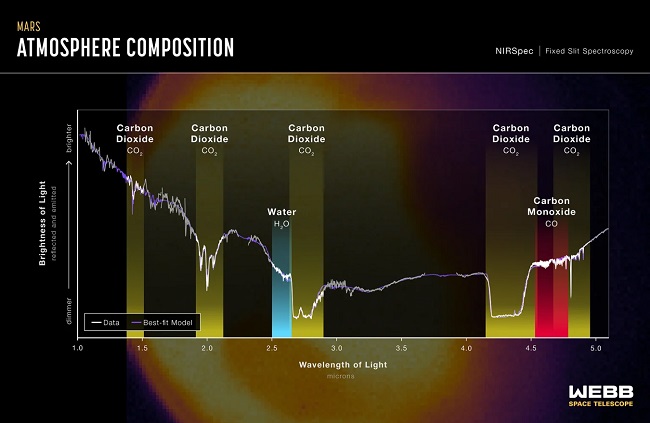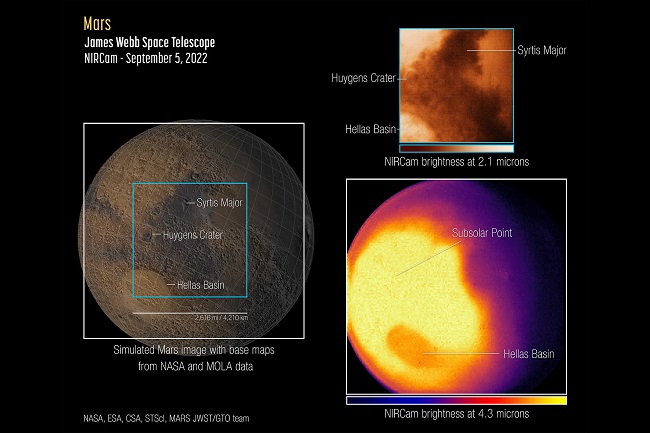
What can images from James Webb Space Telescope tell us about Mars?
The latest images from the James Webb Space Telescope (JWST) of planets in the solar system can provide a lot of useful and interesting information about these planets. NASA and ESA have shared early images of Mars, which were taken on Sept. 5, and have new information to help better understand the planet's atmosphere.
Data from the Near Infrared Radiation Camera (NIRCam) showed that the giant Hellas basin is strangely darker than nearby areas at the hottest time of day, NASA's Giuliano Liuzzi noted that it appears that higher air pressure at lower elevations in the basin suppresses heat emission.

The JWST images also gave space agencies a better understanding of the composition of Mars' near-infrared atmosphere, using the telescope's onboard spectrograph array.
The spectroscopic “map” shows that the planet absorbs carbon dioxide at several different wavelengths and shows the presence of carbon monoxide and water. Future research work will provide more information about the chemical composition of Mars' atmosphere.
Taking pictures of Mars, by the way, is not easy because Mars is one of the brightest objects the James Webb telescope can see, which is a problem for an observatory designed to study more distant objects in the universe. Researchers had to shoot very short images and use special techniques to analyze the results.
This is only the first part of the images and the data obtained through them. According to experts, more observations will be needed to learn more about Mars. However, spectral information already hints at more information about substances on the planet. Liuzzi believes JWST's research could settle the debate over the presence of methane on Mars, potentially indicating that there may have been living on the Red Planet in the distant past.

- Related News
- The end of the Universe: 3 plausible theories of a global apocalypse
- Mutated bacteria resistant to drugs found on the ISS: What does this mean and why is it a problem?
- 4 flares erupted from Sun in rare event: the Earth may be hit by geomagnetic storm (video)
- 11 incredible satellite photos published on Earth Day
- NASA shows all of Ingenuity's flight trajectories in one video
- Could life exist on Saturn's moon Enceladus?
- Most read
month
week
day
- How DNA analysis helps to solve crimes and who can sell your DNA data and why: Interview with former FBI scientist Bruce Budowle 795
- Huge battery, IP68/IP69K and MIL-STD-810H certifications: Ulefone will present the Armor Pad 3 Pro tablet (photo) 781
- 5 original buildings with curious optical illusions (photos) 631
- How will new technologies change future of finance? Interview with director of Apricot Capital (video) 623
- What risks do crypto and digital currencies pose? Interview with Rasmus Nielsen 616
- Metal roofs: What makes them a great choice for small homes? 606
- WhatsApp will get new and useful feature 566
- 4 flares erupted from Sun in rare event: the Earth may be hit by geomagnetic storm (video) 542
- Android 15 to get two useful new features 523
- Mutated bacteria resistant to drugs found on the ISS: What does this mean and why is it a problem? 519
- Archive
